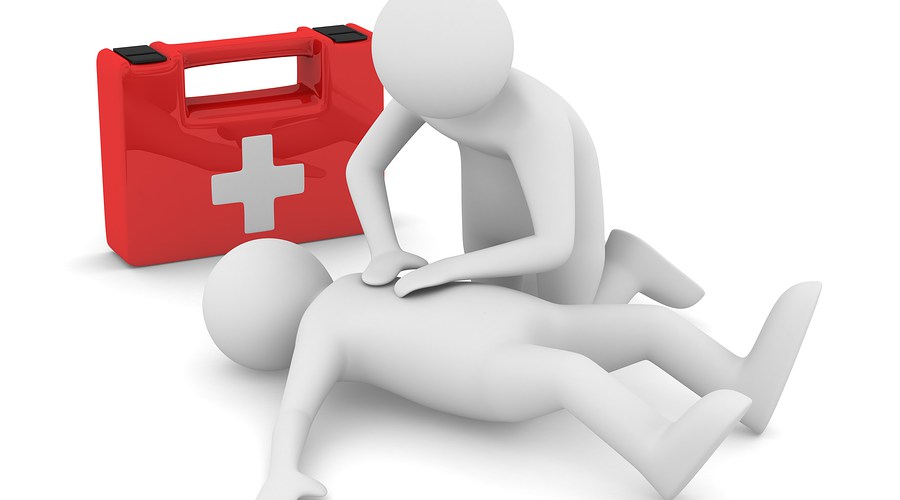We have all been in a situation at some point where there has been an accident and first aid needs to be administered. This can be a large accident or something as simple as a nose bleed but something needs to be done. How do you know what to do? Most of the time unless you have been to a formal first aid class you rely on things your mom and grandma told you or things you may have seen done in a similar situation good or bad. Here we will list some common misconceptions on what to do or not to do.
Nosebleeds
Don’t: Lean the head back or lay the person down this can be harmful and could cause blood to get into the windpipe and possibly blocking their airway.
Do: Sit in an upright position and lean slightly forward pinching the nose for approximately 10 to 15 minutes. You may also apply an ice pack around the nose and on forehead.
Loss of tooth
Don’t: Don’t scrub the tooth cleaning it as this can damage the root. Avoid handling the root pick it up by the crown or top.
Do: Gently rinse the tooth and then place it in a glass of milk. Go to the emergency room there is a possibility the tooth could be re-implanted?
Cuts and scrapes
Don’t: Breathe on and open wound. Don’t try and clean a major wound. Don’t try and push body parts back in. Don’t apply a tourniquet.
Do: Rinse wound with water. Apply pressure to stop the bleeding. If wound is deep or large seek medical attention. If wound is minor apply antibacterial ointment and cover with a bandage that will not stick to the wound.
Burns
Don’t: Apply ice, butter or any other greasy substance to the wound. Don’t try and remove any stuck clothing and do not break any blisters.
Do: Gently flood affected area with cool water or you can use a soft drink or beer if no water is present. Cover wound with plastic wrap or a clean dressing to keep it sterile. Seek immediate medical attention.
Frostbite
Don’t: Rub the affected area and NEVER rub snow on the affected skin.
Do: Get out of the cold. Warm area by tucking hands under arms or warming area with dry gloved hands. Seek medical attention immediately if case is severe.
Choking
Don’t: Slap someone on the back you can force the object farther down the windpipe.
Do: Let the person cough forcefully this is usually the best way to dislodge a piece of food. If that does not work or the person is unable to cough, stand behind them and deliver 5 sharp blows between the shoulder blades with the heel of your hand. Checking mouth quickly after each blow to remove any obstruction. If obstruction persists, try 5 abdominal thrusts known as the Heimlich maneuver. Place a clenched fist above the navel and pull inwards and upwards.
Twisted Knee or Sprained Ankle, Possible Broken Bones
Don’t: Try walking it out or stretching it. Don’t apply heat to loosen muscles. Do not move limb unnecessarily but do support it with something like a splint or sling.
Do: Call 911 if person is in severe pain, has deformity, swelling or an inability to move limb normally. If no break is suspected remember RICE R-Rest Injured area. I-Ice it for 20 minutes at a time for first 24 hours. C-Compress lightly with a bandage before swelling starts. E-Elevate above the heart to minimize swelling.
Poisoning
Don’t: Make the person vomit that could make I worse. Don’t offer water or other fluids those could cause the poisoning to spread faster and farther.
Do: Call National Poison Center (800)222-1222. If person is unconscious place on their side. If poisoned by something corrosive look for signs of it on their clothes and removed those. If severe seek medical attention.
Heart Attack
Don’t: Waste time start CPR immediately if person is unconscious.
Do: Call an ambulance immediately. If person is conscious get them to sit down and remain calm. Give them a 300 mg aspirin to chew up. Be prepared to resuscitate if necessary.
Electric Shock
Don’t: Approach someone who is still connected to electrical source.
Do: Break contact between person and electrical supply by switching off the current. Immediately call 911. If person is unconscious and has no pulse start CPR immediately.
Signs of a Stroke
Do: Know the signs of a stroke. Sudden numbness or weakness of face, arm or leg especially on one side of the body. Sudden confusion, trouble speaking or understanding. Sudden trouble seeing in one or both eyes. Sudden trouble walking, dizziness or loss of balance. Sudden severe headache with no known cause.
Shock
Don’t: Give a person in shock anything to eat or drink.
Do: Be aware of victims, witnesses or loved ones that can experience shock due to an accident or traumatic event. Signs of shock include shallow, fast breathing; rapid pulse becoming weaker; pale, cold and sweaty skin, tinged with grey. Lay the person down on a blanket or rug to keep them warm. Quickly reassure the person; raise and support the legs above the level of the heart, loosen any tight clothing and call an ambulance.

